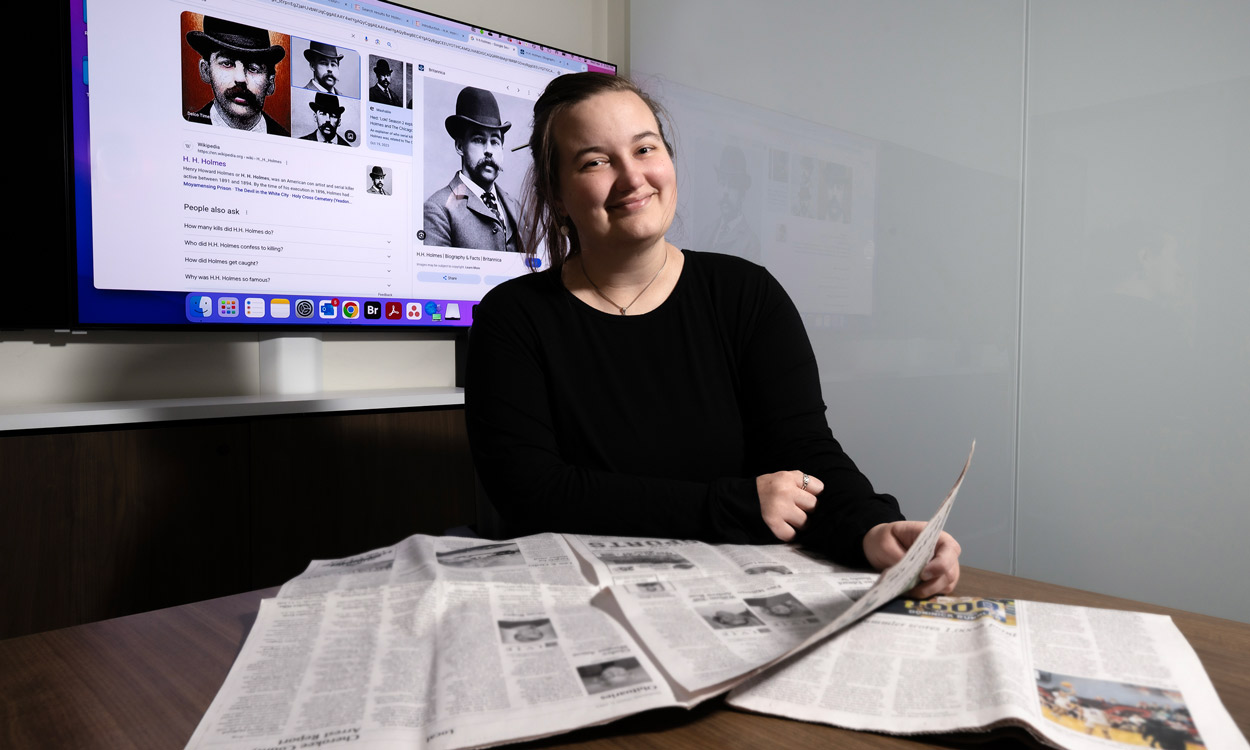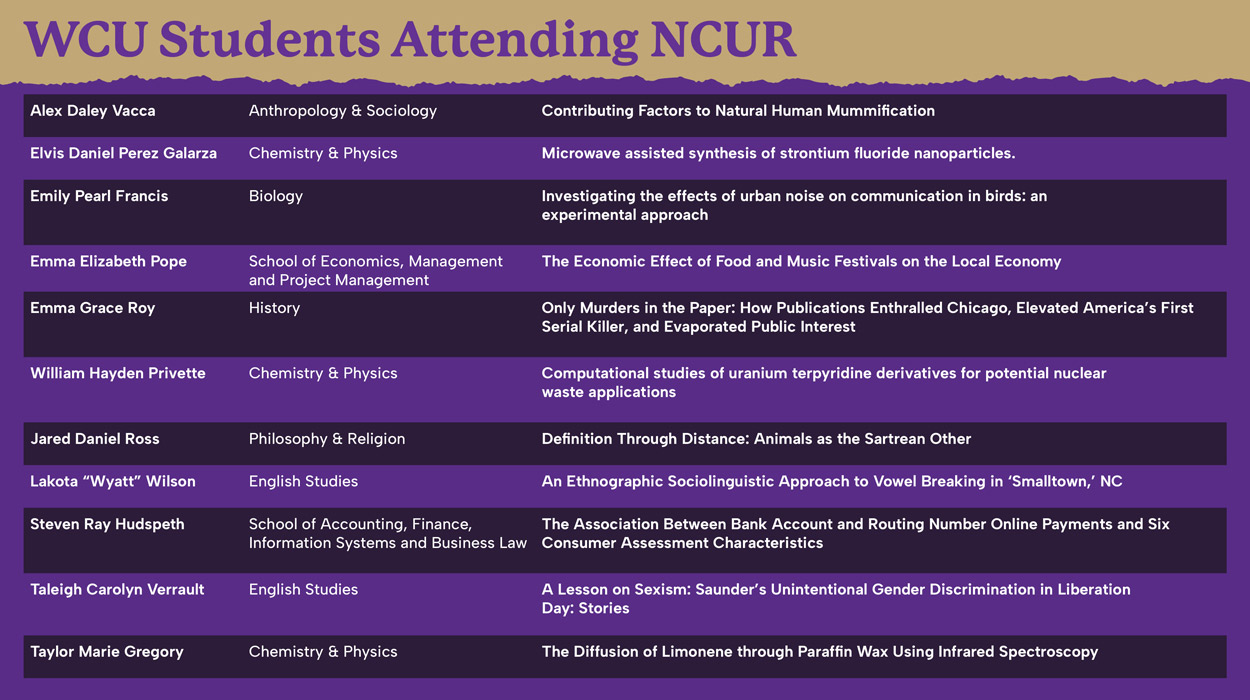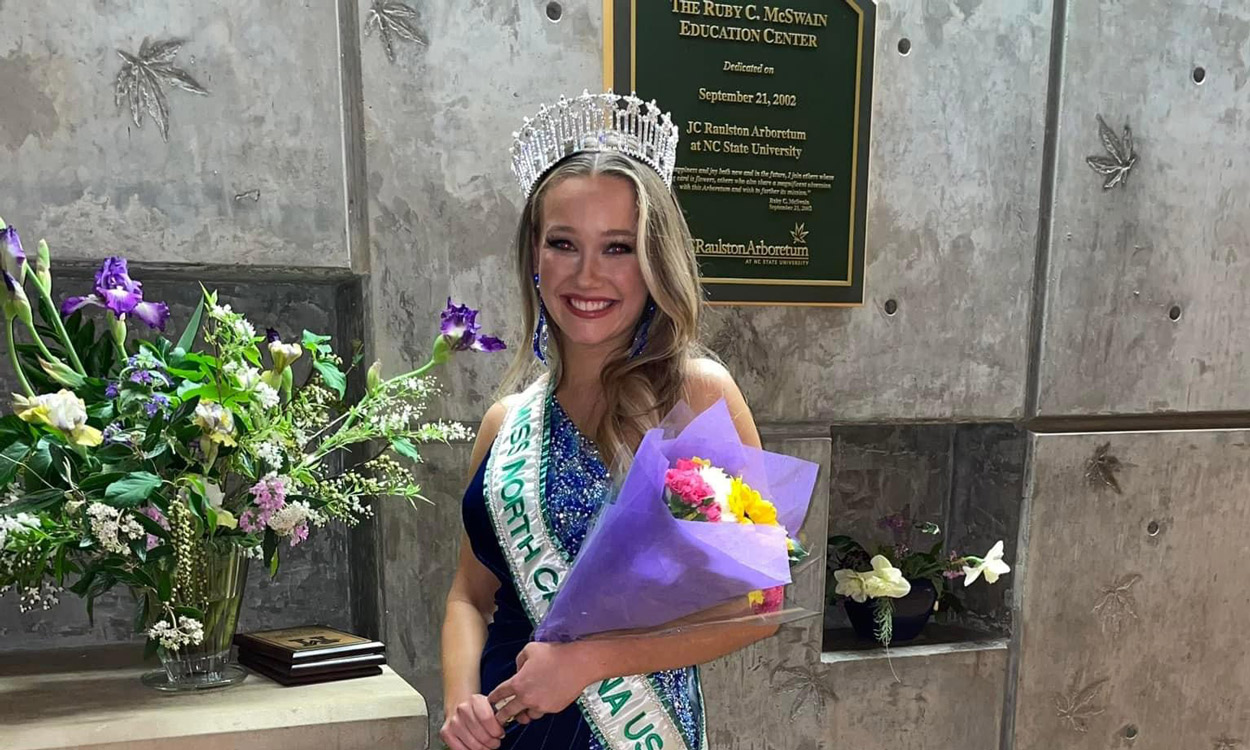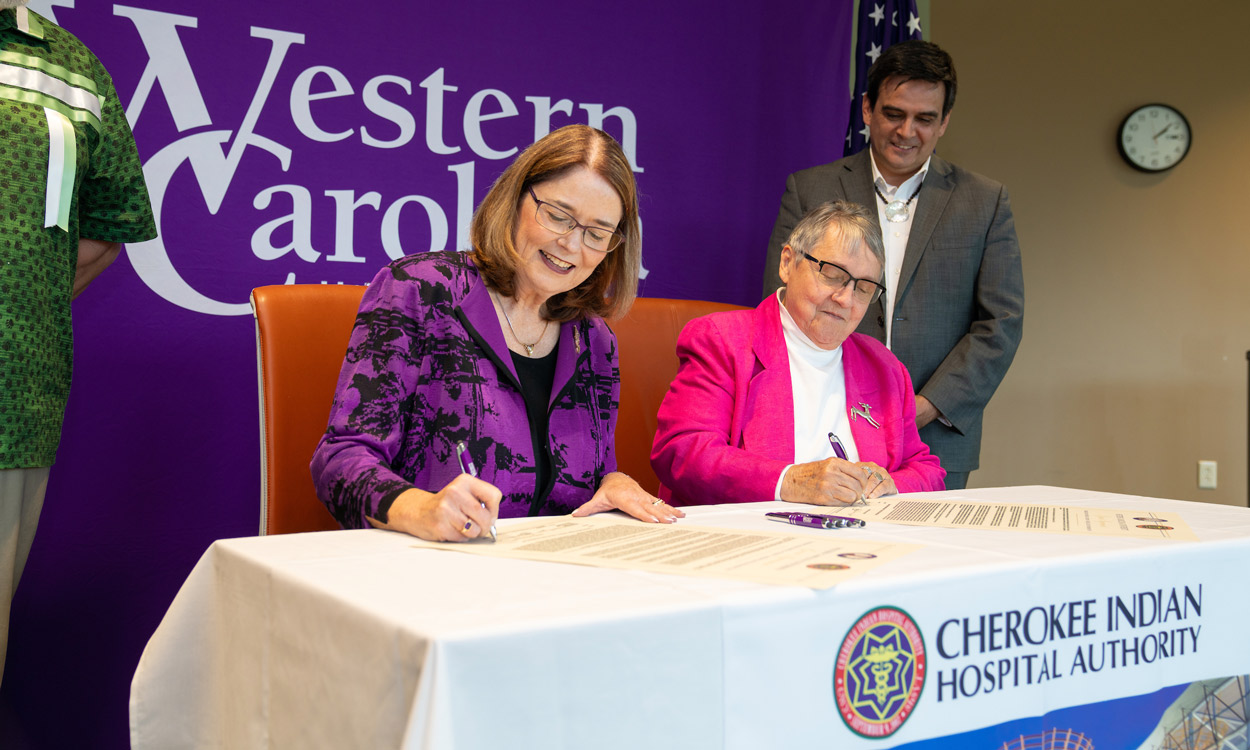WCU student combines love of history and forensics for NCUR research project

Emma Roy
By Julia Duvall
Western Carolina University student Emma Roy, a junior from Clayton double majoring in history and forensic anthropology, has always had a love of history and murder investigations.
Her interest peaked when she was introduced to a murder mystery podcast by her godmother several years ago.
“I am a True Crime fanatic and I got hooked on a podcast about these different serial killers,” Roy said. “Even though my mom does not like gory things, she had interest in Jack the Ripper and listened to that podcast episode with me, which led to me learning about the 1890s serial killer H.H. Holmes and reading the novel, ‘Devil in the White City.’”
After reading the novel, Roy realized that while Holmes’ biographical information had been heavily explored, public perception of the murders had not.
This is when Roy came up with the idea to combine historical research with serial killer investigations.
Through her historical research course at WCU, Roy talked to Alex McCauley, department head and associate professor in WCU’s History Department, about combing her interests with a research paper on the public perception of Holmes through newspaper clippings.
“This is such a cool project and Emma has worked very hard on it,” Macauley said. “A major challenge in a project like this is taking such a sensationalized story and uncovering its deeper historical significance. It takes a student as clever, creative and diligent as Emma to accomplish this feat.”
Roy fondly remembers going with her classmates to the library to check out books for their research and all the books she checked out were about serial killers, crime scenes and murder investigations.
“I remember Dr. McCauley jokingly telling me we were going to get banned from Hunter Library and put on a list because of the books I chose for this project,” she said.
Roy’s research paper, “Only murders in the paper: How publications enthralled Chicago, elevated America’s first serial killer and evaporated public interest,” is 16 pages of information about Holmes, including how yellow journalism influenced public opinion of the investigations of his presumed murders.
“Yellow journalism was about news outlets using sensationalized information with little to no credibility to sell their papers,” Roy said. “While my research was limited to digital archives, I discovered there was this media frenzy about Holmes, then all of a sudden, the articles about the investigation kept getting farther and farther from the front page until nothing was printed.”
Some of the more sensationalized information about Holmes centered on what was dubbed as his “Murder Castle,” a building he commissioned ahead of the 1893 Chicago World’s Fair as a hotel.
“Most of Holmes’ murders took place during the fair,” Roy said. “There were so many victims that worked at his ‘hotel’ and when their families would inquire about them, he would just say, ‘Oh she ran off and got married, I haven’t seen her in months.’ I can’t even imagine. These poor families never got closure.”
There are nine women that are known victims of Holmes. The most well-known was Emeline Cigrand, whom he had connections with prior to the fair.
“He locked her in an airtight vault and she was either gassed or suffocated to death,” Roy said. “She tried so desperately to get out, her footprint was found on the vault where she tried to escape. Looking through these newspaper clippings, nothing was said about her, which I find so strange.”
While Holmes confessed to 27 murders, some of those people were found to still be alive and there is potential that Holmes had more than 130 victims.
He was only convicted for one murder though, that of his business partner and accomplice in insurance fraud schemes, Benjamin Pitezel.
Holmes was hanged for the crime of murder on May 7, 1896.
After sharing her project details with a friend, Roy was encouraged to submit the project to the National Conference on Undergraduate Research.
“I got a big old ‘I told you so’ from my friend when the project was accepted,” Roy said.
Roy, along with 10 other WCU undergraduate students, flew out to Long Beach, California, on April 7 to present their research projects at NCUR.
As for her plans after graduation, Roy has a dream of opening a museum for unsolved murder investigations.
“I would love to curate cold case items for a museum where visitors can try and help solve these crimes,” Roy said. “How amazing would that be to finally give families closure about what happened to their relatives anywhere from five to 200 years ago?”


